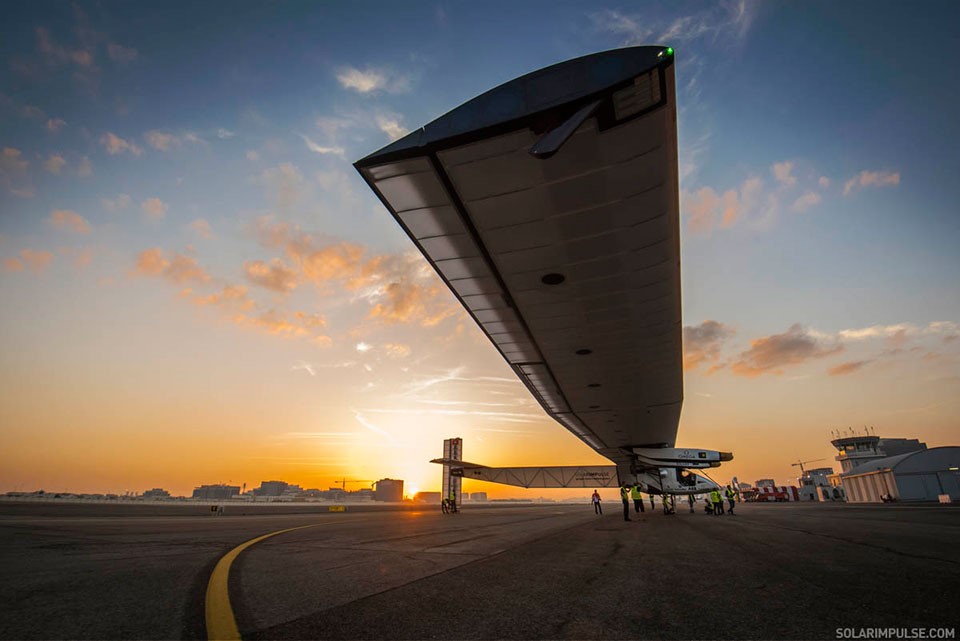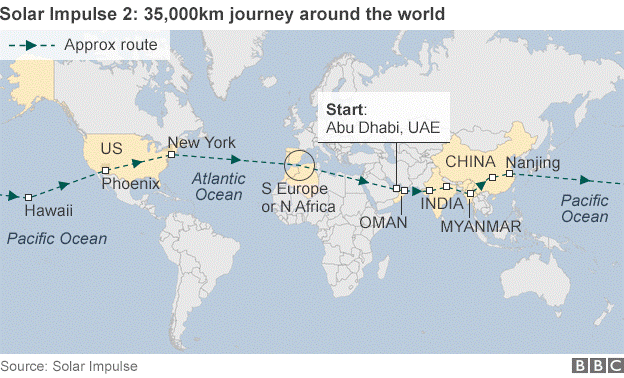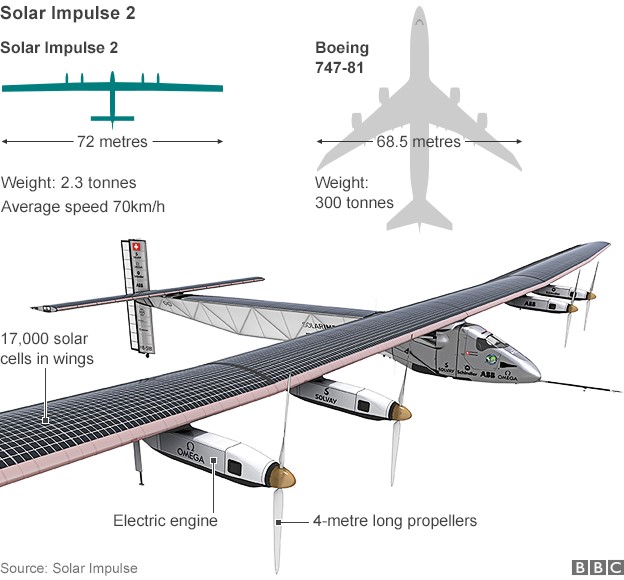
In a record-breaking event, a pair of Swiss pilots are attempting to fly around the world powered solely by solar energy. The flight, which is scheduled to take off today from Abu Dhabi, United Arab Emirates, will last between five months, crossing both the Pacific and Atlantic Ocean as it completes its 35,000 km journey toward South Europe and Africa where it will ultimately conclude.

The singled-seated aircraft — called Solar Impulse 2 — will be piloted by the Swiss team of Andre Borschberg and Bertrand Piccard, swapping positions during each of the many scheduled rest and maintenance stops across the globe.
The craft’s biggest challenge, Borschberg told BBC News, is not the distance above land, in so much as the distance across the oceans. The pilots are no strangers to long distance flights; as many recall, the Borschberg-Piccard pair flew Solar Impulse 2’s predecessor across the United States back in 2013. However, this latest adventure will test the pilots’ endurance like none other, forcing them to fly for up to a continuous five days and five nights to cross the large oceans; unlike standard internal combustion turbofan engine used by 747 and other large aircrafts, Solar Impulse 2 is prop-driven and slow.

The entire mission’s success hinges on two critical factors: size/weight and solar cells/batteries. To that end, the design of original Solar Impulse was inadequate for such a monumental task, requiring a complete overhaul. The new design features a 72 m wingspan, wider than that of a 747 jumbo jet, yet weighs only 2 tons. To harness the power that will drive propulsion, the aircraft includes 17,000 solar panels lining the top of its wings, and energy-dense lithium batteries to sustain the pilots across the Pacific and Atlantic oceans.
It’s not entirely certain that Solar Impulse’s flight will succeed, as ocean crossing is perilous without the proper weather conditions. To that end, planning is just a crucial as the pilots’ ability to endure being crammed in a 3.8 cubic meter cockpit for hours on end. Computer modeling has forecasted that there are few open windows of travel when the weather conditions will permit the aircraft to recharge as it flies for five continuous days, but the pilots must be ultimately ready with life-support gear in the event of a water landing.
The mission’s primary scope is to demonstrate solar power’s viability as a sustainable source of electricity, and whether the venture fails or succeeds, solar power is still predicted to surpass coal as the dominant source of electricity in by 2050, states the International Energy Agency .
Source: BBC
Advertisement
Learn more about Electronic Products Magazine





